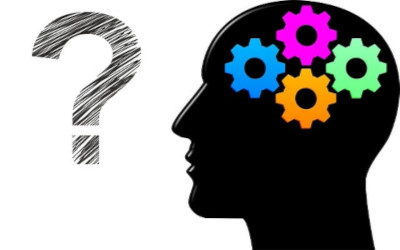Memory is the process where we take the information from the world around us, process it, store it, and later remember it. Sometimes the remembering part happens many years later. We keep the information so we can use it to influence our future actions. Failing to use one’s memory means failing to develop language, relationships, and personal identity. Memory is a biologically fundamental function for our survival. Loss of memory is typically described as forgetfulness or amnesia. Human memory is often compared to a computer’s memory system. But that is not correct because our memory is not perfect. It makes mistakes all the time. Most of us don’t remember many things that happen to us. Memories can change, or they can be misrepresented.
Memory is not just one unit. There are different types of memory, like learning a new word, learning general facts about the world, learning different skills like swimming or how to ride a bike, and a complex memory that lets us ‘re-live’ personal events.
There are four main types of memories. Scientists have debated memory classification for years. A lot of experts agree that there are four main memory types, and all the others are just part of the major categories. Sometimes memory is falsified through stages and processes. People who classify memory into two different types, implicit and explicit memory, consider that other types of memory, such as sensory, short-term, and long-term memory, are not memory types but stages of memory.
The first type is sensory memory. It lets us remember sensory information after the end of stimulation. This type of memory stays in our heads only for a brief moment. Scientists who categorize memory into stages rather than types believe that all other memories begin with the formation of sensory memories. Memorizing a sound or someone’s touch is a sensory memory. If you start to add some other memories to your sensory memory, it becomes a short-term or long-term memory.
Short-term memory lets us memorize things about something for a brief moment. It is a little longer than sensory memory, but not as long as the long-term one. It is also known as primary or active memory. Scientists suggest that short-term memory lasts about 30 seconds. Short-term memory is memorized by practicing it. That means if you have to memorize a line of numbers, you keep repeating it. The second you enter them, you also forget them. If someone asks you about these numbers ten minutes later, you’re most likely unable to do it.
The working memory is a kind of memory that includes immediate and small pieces of information that a person actively uses to perform cognitive tasks. Working memory can also be part of short-term memory, and it is used in turns. Working memory is not only used for saving information. It is also used for manipulating information. Working memory is flexible and dynamic, and therefore it makes learning successful.
Most of our memories are kept in long-term memory. We can already classify memories that we are able to remember after 30 seconds as long-term ones. These memories range from memorizing an acquaintance’s face to memorizing your best friend’s birthday. Unlike a computer’s memory, there is no limit to our long-term memory. Long-term memory can be divided into two categories: explicit and implicit long-term memory. Explicit memories are memories that we knowingly and intentionally take the time to form and evoke. This memory includes our childhood memories and the academic work you learned at school. It can be divided into two categories: episodic and semantic. On the other hand, we are unable to control the formation of implicit memory. They are formed unconsciously, and they affect the way a person thinks and behaves. Implicit memory helps us remember how to ride a bike, even if we haven’t done it for years. Three different ways to memorize things from long-term memory are recall, recognition, and relearning.
To form a memory, we need to be focused. We need to give something attention. To form a long-term memory, the brain gets information from our working memory. Now this information is stored in the part of the brain called the hippocampus. In the hippocampus, there are going to be changes in your neural wiring. There are going to be new connections between neurons. These are called synapses. These new connections stay as long as they are used. That means if you don’t use or recall your memories, you are most likely to forget them.
Together with memory comes also forgetting. There are two theories about why we forget memories. One of them is the decaying theory. This theory happens when the memory is not repeated or recalled. The other theory is called interference theory. This means if you get new information, then the old information in your brain gets rewritten. Forgetting is completely normal, and it is actually necessary for a healthy brain. Scientists have found out that in our nerve cells there are also small molecules that are responsible for forgetting.

Sources:
https://www.fil.ion.ucl.ac.uk/memo/memory.html
https://en.wikipedia.org/wiki/Memory
https://www.verywellmind.com/different-types-of-memory-and-their-functions-5194859
https://elearningindustry.com/memory-types-facts-and-myths
https://www.ncbi.nlm.nih.gov/pmc/articles/PMC4246028/
https://lesley.edu/article/stages-of-memory
https://www.columbiapsychiatry.org/news/why-forgetting-good-your-memory
